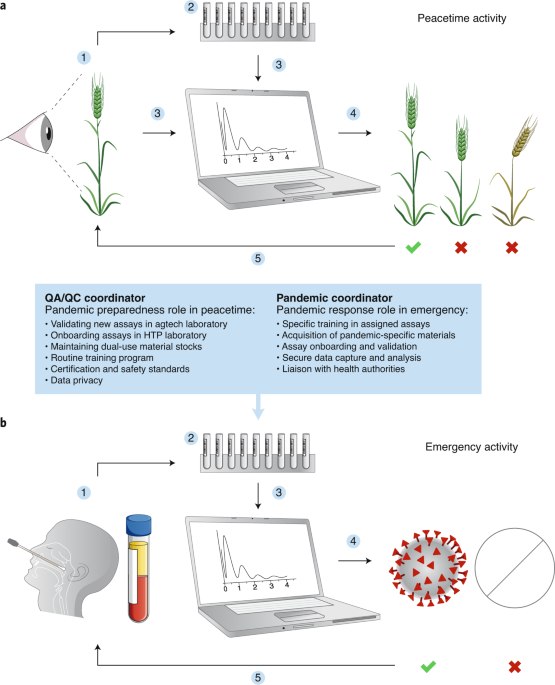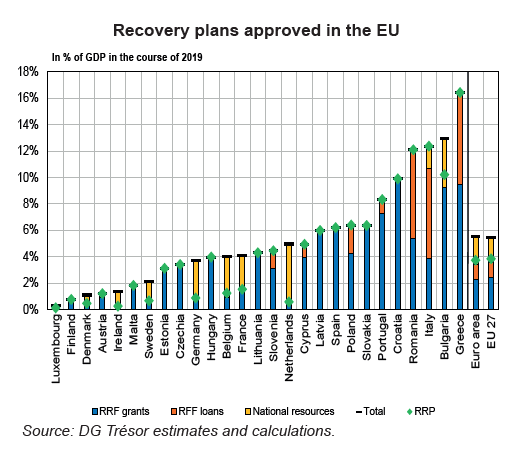Elevate Your Fitness with Darebee’s Full Body Workouts
Unlocking Full Body Fitness with Darebee
Embarking on a journey to transform your body is both exhilarating and challenging. In the realm of fitness, one name stands out for its comprehensive approach to full-body workouts: Darebee. Offering a plethora of workout plans and routines, Darebee is a beacon for those seeking to achieve peak physical condition and vitality.
The Darebee Philosophy
At the heart of Darebee lies a philosophy grounded in accessibility and effectiveness. Their ethos revolves around the belief that everyone, regardless of their fitness level or resources, deserves access to high-quality workout programs. This inclusivity is reflected in their extensive library of free workouts, ensuring that anyone with an internet connection can kickstart their fitness journey without breaking the bank.
Diverse Workout Options
Darebee’s arsenal of full-body workouts is as diverse as it is effective. Whether you’re a seasoned gym-goer looking to shake up your routine or a beginner taking your first steps into the world of fitness, Darebee has something for you. From bodyweight circuits and HIIT sessions to strength training and yoga, their repertoire covers all bases, ensuring that boredom never creeps in.
Structured Training Programs
One of Darebee’s strengths lies in its structured training programs designed to cater to specific fitness goals. Whether your aim is to shed excess pounds, build lean muscle, or improve endurance, Darebee has a program tailored to your needs. These programs provide a roadmap for success, guiding you through weeks of progressive workouts that gradually push your limits and yield tangible results.
Intense Challenges for Maximum Gains
For those who thrive on pushing their limits, Darebee offers a plethora of intense challenges guaranteed to test your mettle. From month-long fitness challenges to grueling 30-day workout blitzes, these programs are not for the faint of heart. However, for those willing to embrace the challenge, the rewards are immense, with gains in strength, endurance, and mental fortitude awaiting those who persevere.
Flexibility and Adaptability
One of the hallmarks of Darebee’s approach to fitness is its emphasis on flexibility and adaptability. Recognizing that life often throws curveballs that can disrupt even the most well-laid workout plans, Darebee encourages its users to be adaptable. Whether you have access to a fully-equipped gym or are confined to the space of your living room, Darebee offers workouts that can be modified to suit your environment and equipment availability.
Community Support and Motivation
Embarking on a fitness journey can be a daunting prospect, but with Darebee, you’re never alone. Their vibrant online community provides a source of support, motivation, and camaraderie for individuals from all walks of life. Whether you’re celebrating a personal milestone, seeking advice on overcoming a plateau, or simply looking for a virtual high-five, the Darebee community is there to lift you up and keep you moving forward.
The Darebee Difference
In a saturated fitness landscape dominated by flashy gadgets and expensive gym memberships, Darebee stands out as a beacon of simplicity and efficacy. Their commitment to providing accessible, effective, and versatile workout programs has earned them a devoted following of fitness enthusiasts worldwide. Whether you’re a novice looking to kickstart your fitness journey or a seasoned athlete seeking new challenges, Darebee has something to offer you. So why wait? Take the plunge, unleash your full-body potential, and join the Darebee revolution today. Read more about darebee full body
Strategic Readiness: Pandemic Preparedness Training

Strategic Readiness: Pandemic Preparedness Training
In the face of global health crises, pandemic preparedness training has emerged as a critical component in ensuring the resilience and adaptability of individuals, organizations, and communities. This comprehensive training equips participants with the knowledge and skills necessary to navigate and respond effectively to pandemics.
Understanding the Importance of Preparedness:
The first step in pandemic preparedness training is understanding the importance of being prepared. This section delves into the reasons why preparedness is crucial, emphasizing the unpredictable nature of pandemics and the potential impact on individuals, businesses, and public health systems.
Pandemic Preparedness Training: A Comprehensive Guide
For a comprehensive guide on pandemic preparedness training, visit Pandemic Preparedness Training for valuable insights and resources.
Risk Assessment and Planning:
Pandemic preparedness begins with a thorough risk assessment and planning process. This includes identifying potential risks, assessing vulnerabilities, and developing comprehensive plans to mitigate the impact of a pandemic. Participants learn how to create tailored strategies based on their specific context, ensuring a proactive rather than reactive approach.
Health and Safety Protocols:
A crucial aspect of pandemic preparedness training is the understanding and implementation of health and safety protocols. This involves educating participants on proper hygiene practices, the effective use of personal protective equipment (PPE), and adherence to public health guidelines. These protocols not only protect individuals but also contribute to broader community well-being.
Communication Strategies in Crisis:
Effective communication is paramount during a pandemic. This section focuses on training participants in communication strategies tailored for crisis situations. From internal communication within organizations to transparent and timely information dissemination to the public, these strategies help maintain trust and facilitate a coordinated response.
Role-Specific Training for Professionals:
Different professions require specific skills and knowledge in pandemic situations. This part of the training tailors information for various professionals, such as healthcare workers, emergency responders, and business leaders. Role-specific training ensures that each sector is well-prepared to fulfill its unique responsibilities during a pandemic.
Utilizing Technology for Preparedness:
In the digital age, technology plays a crucial role in pandemic preparedness. This segment explores the use of technology for early detection, monitoring, and communication. From surveillance systems to data analytics, participants learn how technology can enhance the effectiveness of pandemic response efforts.
Community Engagement and Support:
Community engagement is a cornerstone of effective pandemic preparedness. Training emphasizes the importance of community involvement, collaboration, and support networks. Participants learn how to engage with diverse communities, address concerns, and foster a sense of collective responsibility for health and well-being.
Simulations and Drills:
Hands-on experience is invaluable in pandemic preparedness training. Simulations and drills allow participants to apply their knowledge in realistic scenarios, honing their decision-making skills and teamwork. These exercises provide a practical understanding of the challenges posed by pandemics and enhance overall readiness.
Continuous Learning and Adaptation:
Pandemic preparedness is an ongoing process that requires continuous learning and adaptation. This section of the training focuses on creating a culture of preparedness, encouraging participants to stay informed, update plans regularly, and remain agile in the face of evolving health challenges.
Conclusion:
Pandemic preparedness training is not just a precautionary measure; it is a strategic investment in the resilience and well-being of individuals and communities. By understanding the importance of preparedness, conducting risk assessments, implementing health and safety protocols, fostering effective communication, providing role-specific training, leveraging technology, engaging with communities, and conducting simulations, participants are better equipped to navigate the complexities of pandemics. This comprehensive training sets the stage for a proactive and coordinated response, ensuring that individuals and organizations are strategically ready to face the challenges of global health crises.
Revitalizing Economies: Strategies for Post-Pandemic Recovery

Revitalizing Economies: Strategies for Post-Pandemic Recovery
The global pandemic has significantly impacted economies worldwide, necessitating strategic approaches for recovery. In this article, we delve into key strategies to revitalize economies in the post-pandemic era, fostering resilience and sustainable growth.
Understanding the Economic Fallout: Challenges and Opportunities
The first step in economic recovery is understanding the challenges and opportunities presented by the pandemic. From disrupted supply chains to shifts in consumer behavior, a comprehensive understanding of the economic fallout enables policymakers and businesses to formulate targeted recovery strategies.
Fiscal Stimulus and Monetary Policies: Injecting Vital Support
Governments play a crucial role in economic recovery through fiscal stimulus and monetary policies. Injecting financial support into the economy through stimulus packages and implementing accommodative monetary policies helps alleviate economic stress. These measures aim to boost spending, support businesses, and restore consumer confidence.
Sector-Specific Support: Tailoring Assistance for Resilience
Different sectors have experienced varying degrees of impact during the pandemic. Tailoring support measures for specific industries ensures a more targeted and effective recovery. Whether it’s tourism, hospitality, or manufacturing, providing sector-specific assistance contributes to the overall resilience of the economy.
Digital Transformation: Accelerating Technological Adoption
Digital transformation has emerged as a catalyst for economic recovery. Accelerating technological adoption enhances productivity, improves efficiency, and opens new avenues for growth. Investing in digital infrastructure, promoting e-commerce, and fostering innovation contribute to a more resilient and adaptable economy.
Sustainable Development: Balancing Growth and Environmental Responsibility
Post-pandemic recovery offers an opportunity to prioritize sustainable development. Balancing economic growth with environmental responsibility ensures long-term resilience. Investing in green technologies, promoting renewable energy, and incorporating sustainable practices into business models contribute to a more environmentally conscious recovery.
Workforce Reskilling and Upskilling: Navigating the Changing Job Landscape
The pandemic has reshaped the job landscape, necessitating a focus on workforce reskilling and upskilling. Investing in education and training programs equips the workforce with the skills needed for emerging industries. This proactive approach not only reduces unemployment but also fosters economic adaptability.
Global Collaboration: Strengthening International Partnerships
International collaboration is integral to economic recovery. Strengthening global partnerships facilitates trade, technology transfer, and knowledge sharing. By fostering cooperation on a global scale, economies can tap into diverse resources and create a more interconnected and resilient economic ecosystem.
Infrastructure Investment: Building for the Future
Strategic infrastructure investment plays a vital role in economic revitalization. Developing and upgrading infrastructure, including transportation, communication, and energy systems, stimulates economic activity, creates jobs, and sets the foundation for sustained growth in the post-pandemic era.
Diversification and Innovation: Redefining Economic Models
Economic recovery requires redefining economic models through diversification and innovation. Encouraging entrepreneurship, supporting startups, and fostering a culture of innovation contribute to economic dynamism. Diversifying revenue streams reduces vulnerability and enhances the adaptability of economies.
Accessing Economic Recovery Pandemic: A Comprehensive Resource
For additional insights and resources on strategies for economic recovery in the post-pandemic era, consider exploring Economic Recovery Pandemic. This centralized hub provides valuable information, practical tips, and support for policymakers, businesses, and individuals navigating the complexities of economic recovery in the wake of the global pandemic.
Rebuilding Stronger: Effective Pandemic Recovery Plans
Rebuilding Stronger: Crafting Effective Pandemic Recovery Plans
The aftermath of a pandemic necessitates strategic recovery plans to rebuild and strengthen communities. In this article, we delve into the elements of effective pandemic recovery plans, emphasizing resilience, innovation, and a collective commitment to emerging stronger from the challenges faced.
Assessment and Reflection: Understanding the Impact
The foundation of any effective pandemic recovery plan lies in a thorough assessment of the impact. Reflecting on the economic, social, and health consequences allows for a nuanced understanding of the challenges ahead. This phase involves collaboration between policymakers, experts, and community stakeholders to gather insights for informed decision-making.
Economic Revitalization: Stimulus and Support Measures
One key aspect of pandemic recovery plans is the revitalization of the economy. Governments implement stimulus packages and support measures to jumpstart economic activities. These measures may include financial aid for businesses, job creation initiatives, and investments in key sectors to fuel economic growth and stability.
Healthcare Infrastructure Reinforcement: Learning from the Crisis
The pandemic exposed vulnerabilities in healthcare systems globally. Recovery plans prioritize reinforcing healthcare infrastructure to better handle future health crises. This involves investing in medical facilities, ensuring an adequate supply of medical resources, and enhancing research and development capabilities to stay ahead of emerging health challenges.
Innovation and Adaptation: Paving the Way Forward
An essential component of recovery plans is fostering innovation and adaptation. Businesses, educational institutions, and communities must embrace new ways of operating. Innovation in technology, healthcare delivery, and education ensures resilience in the face of uncertainties, laying the groundwork for a more adaptable and robust future.
Community Engagement: Building Social Cohesion
Recovery plans prioritize community engagement as a cornerstone for rebuilding. Fostering social cohesion involves engaging communities in decision-making processes, addressing concerns, and promoting inclusivity. Strong community bonds contribute to a collective sense of purpose, making recovery efforts more effective and sustainable.
Environmental Sustainability: A Focus on Resilient Futures
Pandemic recovery plans recognize the importance of environmental sustainability. Embracing eco-friendly practices and investing in sustainable infrastructure contribute to building resilience against future crises. Balancing economic recovery with environmental stewardship ensures a more sustainable and resilient future for generations to come.
Education Transformation: Adapting to New Norms
Recovery plans acknowledge the transformative impact on education. Adapting to new norms involves investing in technology for remote learning, providing support for educators, and addressing the educational inequalities highlighted by the pandemic. This transformative approach ensures a resilient and inclusive education system.
Psychosocial Support: Addressing Mental Health Challenges
The pandemic has taken a toll on mental health globally. Effective recovery plans include provisions for psychosocial support, recognizing the need to address mental health challenges. Initiatives may involve accessible mental health services, community support networks, and destigmatizing mental health issues for a healthier society.
Global Cooperation: Solidarity in Recovery
Pandemic recovery plans extend beyond national borders. Global cooperation is essential for sharing resources, expertise, and best practices. Collaborative efforts between countries, international organizations, and global initiatives strengthen the collective response to the pandemic aftermath, fostering a sense of global solidarity.
Resilience Building for the Future: Lessons Learned
As communities implement pandemic recovery plans, it is vital to incorporate lessons learned for resilience building. This involves creating frameworks for future crisis management, prioritizing data-driven decision-making, and instilling a culture of preparedness. Recovery plans become a roadmap for not just rebuilding but also for fortifying against future uncertainties.
For more insights on effective pandemic recovery plans, visit Pandemic Recovery Plans.
Adapting Global Education: Challenges and Innovations

Navigating International Education Amidst the Pandemic Challenges
The landscape of international education has undergone significant transformations in the face of the ongoing global pandemic. In this article, we explore the challenges and innovative strategies that have emerged as educators, students, and institutions adapt to the new normal.
Challenges in International Education
The pandemic has introduced unprecedented challenges for international education. This section delves into the hurdles faced by students, educators, and institutions, including travel restrictions, remote learning barriers, and the emotional toll of being away from home during these uncertain times.
Transition to Remote Learning: A Global Shift
One of the primary responses to the pandemic’s challenges has been the global shift to remote learning. This part of the article explores how educational institutions worldwide have adapted their teaching methods, incorporating online platforms and technology to ensure continuity in the learning process.
Impacts on Student Experiences and Well-being
The disruptions in international education extend beyond academics to impact students’ overall experiences and well-being. This section discusses the emotional and social aspects of student life, addressing issues of isolation, cultural adjustments, and the importance of mental health support.
Innovations in Virtual Classrooms
As traditional classrooms give way to virtual settings, innovative approaches to teaching have emerged. This part of the article explores the use of virtual classrooms, interactive online tools, and collaborative platforms that aim to enhance the learning experience in the absence of physical classrooms.
Challenges for International Students
International students face unique challenges, including visa uncertainties, financial strains, and the prospect of remote learning in a different time zone. This section sheds light on the specific difficulties encountered by international students and the efforts made to support them during these trying times.
Cultural Exchange in a Digital Era
The pandemic has prompted a shift in the dynamics of cultural exchange among international students. This part of the article discusses how virtual platforms and online interactions have become essential tools for fostering cross-cultural connections in the absence of traditional in-person exchanges.
Technological Advancements in Education
While the pandemic has posed challenges, it has also accelerated technological advancements in education. This section explores how educational technology has evolved to meet the demands of remote learning, from virtual laboratories to AI-driven personalized learning experiences.
International Collaboration for Educational Resilience
Amidst the challenges, international collaboration has become a cornerstone for educational resilience. This part of the article highlights collaborative efforts between institutions, governments, and global organizations to address the shared challenges and create a more resilient international education ecosystem.
TheHealthyConsumer.com: A Resource for International Education Insights
For comprehensive insights into navigating international education amidst the pandemic, visit TheHealthyConsumer.com. The website provides articles, tips, and resources dedicated to understanding and adapting to the challenges of international education in the current global scenario.
Looking Forward: Adapting and Innovating for the Future
In conclusion, navigating international education amidst the pandemic requires ongoing adaptation and innovation. This final section reflects on the resilience shown by students, educators, and institutions and emphasizes the importance of staying informed and proactive in shaping the future of global education.
In summary, the challenges faced by international education amidst the pandemic are met with resilience, innovation, and collaborative efforts. TheHealthyConsumer.com serves as a valuable resource for those seeking guidance on understanding and navigating the complexities of international education in these unprecedented times.




(501).jpg)



